|
This week’s blog features reviews of two books, neither of which are published by Selfishgenie Publishing. Both are by the same author, Rohini Sunderam. The reviews are submitted by one of our authors, Robert Cubitt. All book reviews posted on the Selfishgenie Publishing blog page are the opinions of the reviewers, not those of the Selfishgenie management. Rohini Sunderam was born in Halifax, Nova Scotia but now lives in Bahrain. She describes herself as a “semi-retired advertising copywriter”. She is very active in writing groups in Bahrain and was shortlisted for the Atlantis Short Story Contest in 2013. She was also longlisted for the WOW Women on Writing CNF Essay contest for Q4 2020. A Little Gem For The Romantics. 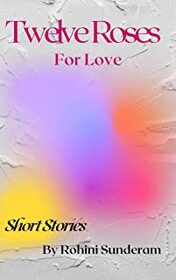 When it comes to the genres I read, I have to admit that romance and love stories aren’t the first shelf I go to in the library, but I do occasionally dip my toe into those waters and in the case of “12 Roses For Love”, by Rohini Sunderam, I’m glad I did. This collection of short stories is a real gem. Firstly, while their theme is love and romance, they are far from traditional in their approach. If I tell you that one of the stories has an armchair as its central character, you can probably understand what I’m getting at. The stories are set in different time periods and involve different characters (except for two of them), but they all have love at their core though, as already mentioned, the nature of that love is sometimes unconventional. "The stories are beautifully told" The stories are beautifully told, with great use of language. There is a kind of poetry behind them. The book isn’t long, only 61 pages, but that is long enough to tell the 12 short stories that gives the book its title. Why 4 stars rather than 5? I felt that one or two of the stories were a fraction short of being complete. They left unanswered questions which, on a personal level, I found frustrating. But that may be the author’s intention, to leave an air of mystery for the reader to enjoy and other readers might feel that the stories ended in just the right place. I certainly have no hesitation in recommending this to lovers of both romantic fiction and short stories. You can find out more about “12 Roses For Love” by Rohini Sunderam here. Must Read Poetry For The Corporate Masses  It was so lovely to finally find a book of poetry that didn’t make me groan with despair. There’s nothing wrong with poetry as an art form of course, but so much of it, particularly contemporary poetry, is just bad, bad, bad. But not Corpoetry by Rohini Sunderam. This is a delight. Perhaps it was the way I was taught poetry at school. Endless boring epics from poets that may, or may not, have been high on drugs. I can’t listen to a verse of the Rhyme Of The Ancient Mariner without suffering flashbacks of my own, and I assure you those aren’t drugs related. They are Samuel Taylor Coleridge related. When I was asked to review this book it didn’t fill me with joy, but I love a challenge and I thought it might be challenging to have to find something positive to say about yet more poetry, but I needn’t have worried. There’s plenty of positive things to say about this collection and I’m more than happy to say them. The theme of the collection is the Corporation. This means that there is something in this collection for most people. We have met the people Rohini writes about. We may even be the people she is writing about. In fact I’d place a bet that any reader will be able to pick themselves out in at least one of the poems. To quote from a poem entitled 'Alpha Me', who hasn’t heard something like this? “Modern and millennium smart Totally, utterly state of the art That’s me, Alpha me Perfectly, ideally Suited and Booted.” The poems are short, use nice simple metaphors and analogies, but get to the very heart of the subject like a scalpel cutting into flesh. There is a sharp wittiness coupled to just a tiny touch of cynicism behind Rohini’s writings. That air of worldly weariness, that ‘been there, done that, got the tee-shirt’ feeling. "I laughed out loud" I have to say that I laughed out loud at some of these poems, but some of them also made me stop and think about the way people are managed and treated in the corporate workplace. This isn’t a Pam Ayers world of fluffy but comedic bunny rabbits living in hutches, or regret at poor dental habits. This is sharp and satirical stuff. Even if you don’t work in the corporate world a lot of what you will read is about people and situations you will recognise from pretty much any place of employment. The following poem I reproduce in full, because it is so up to date and captures a mood. It’s called 'Big Cheeses'. Can someone please explain to me A small insignificant nonentity What is it that the top guys do To merit all that ballyhoo? Six and seven figure salaries Numbers like leaves on trees In stratospheres so rarefied To get there I am terrified. But, even so, I’d like to know What it is they do so Fantastically, uniquely great That plunged us into this state? If I screwed up my little job They would have me on the hop. My permanent part-time state Would be reduced to hourly rate. But when they screw up really big time Mega, giga, hugely big time, Enough to shut down whole departments (some poor mid-levels lost apartments). But those guys at the very top (it’s enough to make my heart stop) Would you believe that they With gazillions walked away? Were they fired? So I’m told. And if I may be so bold, You see I really need to understand I can’t grasp this notion and Quite get my head around it They lost our money, every bit, That we had all worked so hard to get. They made some really big mistakes Yet they received golden handshakes. I never thought I would ever write this about a book of poetry, but if you want to read something unique, original and amusing please give this book a try. I can’t imagine it being too long before we start seeing extracts of Rohini’s poems adorning mouse mats, mugs, calendars and posters. I’ll be the first into Rymans. You can find out more about “Corpoetry” by Rohini Sunderam here. Submitting books for review. Having read the above reviews, you may be considering submitting your own work for us to feature. You are welcome to do so, but we have to issue a word of warning.
First, our authors are very busy people who have very tall "to be read" piles. They will probably get to your book eventually, but the time taken to do so may exceed the radioactive half-life of Bismuth-209 (approximately 2.9 x 10 to the power 19 years). Secondly, our authors are very honest in their reviews. If they think your book is only worth 1 star (or even no stars) they will say so and they will provide reasons why. So, if you are not prepared to risk that, it is better not to send your book in. But look on the positive side - they will also award 5 stars if they think your book merits that. And it's only their opinion anyway. If you still want to submit a book for review, then please:
Summarised versions of reviews will also be posted on Amazon and Goodreads, and may also be posted on other sites by request. And if you would like to be notifed when our blogs are posted, you can sign up for our newsletter by clicking on the button.
0 Comments
Week 15 - Measure For Measure  This week’s blog is split into two parts, but they are closely related. The first is Search Engine Optimisation (SEO) and the second is measuring the success of your marketing. Now, we would be the first to admit that we are not experts in SEO. If you want one of those, all you have to do is search SEO on Twitter and you’ll find about a gazillion people on there who either are, or claim to be, gurus on this subject and they’ll help you – for a price. But in terms of the completeness of this series of blogs, we would be very remiss if we didn’t mention this subject, so here goes. "helping people to find you, or your books, on the internet" What is SEO? It’s all about helping people to find you, or your books, on the internet and social media. 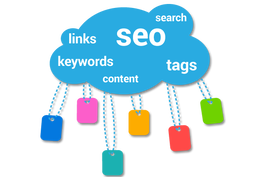 Most blogs about SEO concentrate on promoting a website. Firstly, you may not have a website and secondly, we’re mainly talking about promoting your work through social media. However, people do search for book ideas using search engines such as Google and they also do searches on Amazon and other book selling sites and the same SEO principals apply. People do searches by entering search words and the critical words they use in the query are known as “keywords”. If you are using the same keywords as the person doing the search, there is a high probability they will find you (or your book). But if you aren’t, they won’t. We looked for more information on using keywords on Amazon and this blog was quite useful. According to that article, people looking for books on a particular subject are likely to enter a short description of what they are looking for, rather than single words. This is called a “string” of keywords.  So, in the “keywords” section of your book’s description, you connect together several attributes about the book that someone may look for. For example, if someone is looking for a romantic novel that also involves pirates, they may type in the string “books about romance involving pirates”. I actually typed that into Amazon’s search bar and, guess what, I got several returns of books that involved both pirates and romance.  That approach won’t guarantee that your book is on page one of the search results, but it will certainly be found and it will be in the list somewhere. We found some of the books we published on page one of the results thanks to the keyword strings we have used in their descriptions. Finding the right keyword strings may involve some trial and error. Unlike Google, Amazon’s search bar isn’t so good at predicting commonly used search terms based on what you are typing. We got as far as “Romance in…” when the predictive text gave up and didn’t suggest “including” or “involving”. When we tried “Romance and …” It didn’t carry on predicting past the P in “pirates”. This means that you have no way of knowing if a search terms has been used before. But it is worth spending some time trying out keyword strings that might work with your book and seeing what sort of returns you get. If the keyword strings you enter return books of the type you write, then those are the strings you should be using in your book's description on the retail platforms you use. 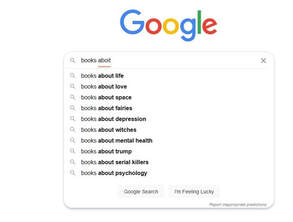 Many readers like following a series, so if your book is part of a series, even if it is only the first, make sure you include “…. book series” as one of your keyword strings eg Sci-fi book series. And if you aren’t getting the results you expected after a few weeks (you have to give things time to produce results), you can try some different strings and see how they work. Importantly, though, if your books use those keywords strings on Amazon (and other retail sites), they will also be picked up by Google if someone searches there for your books. So, you can try doing your searches there first and make use of Google’s better predictive search term capabilities. "The use of the right keywords is also a factor when you use SEO for social media." The use of the right keywords is also a factor when you use SEO for social media. As we said at the start of this blog, we aren’t experts in SEO, so we went looking for people who are and we came across this blog, which contains the key messages.  People do search social media using keywords and hashtags, so having the right keywords and hashtags in your posts will help them find you. Every day Twitter tells you what keywords and hashtags are “trending”, so you can join in the conversations if you are interested in those topics. It’s unlikely that your keywords or hashtags will ever trend, but some of those trending topics may be of interest to your target audience so RT’ing the best of the posts will help with your engagement. But for you, it is using the right keywords or hashtags in your posts so when people do searches on social media using those words, they will find your posts amongst the results. There will still be a crowd of course. If you write romance, then #romance is a hashtag that produces a lot of search results. So, you have to use something a bit more targeted, such as #periodromance or #modernromance. There’s still going to be a crowd, but it will be a smaller crowd. 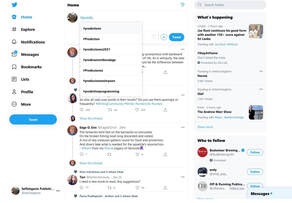 You can also create and use hashtags of your own. If your Tweets are RT’d, those hashtags will become better known over time. Your audience will start to recognise them and they will, perhaps, think of using them for searches. Remember: all hashtags started with someone creating them. Some never catch on, some are still in use years later. Finding hashtags that are already in use is easy enough. When you use the # symbol, predictive text starts to offer you choices of previously used tags. But you won’t know which ones are most popular amongst users. Just because hashtag has been used, it doesn’t mean it is useful. 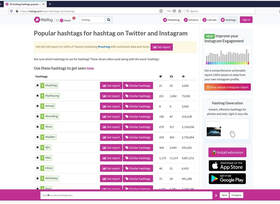 There are websites that will help you to choose the right hashtag. We use Ritetag, which is free. As well as showing you which hashtags are already being used and how visible they are, if you create your own hashtags you can look on Ritetag a few weeks later and see what sort of visibility you are getting. Just one final word on hashtags. Social media users comment on how distracting they are, so the experts advise never using more than three in any post and placing them at the end of the message, rather than within the main body of the text. I was reminded of this just a few moments ago when I was on Twitter and came across a Tweet that was mainly made up of hashtags and immediately scrolled past it. "Knowing how your hashtags are working is useful information" Knowing how your hashtags are working is useful information. If they aren’t working, you need to find a way of promoting them or you need to change them.  Measurement is usually regarded as the boring part of marketing. Besides, there’s only one measurement that you are interested in – book sales. But measurement is pretty important when it comes to creating a successful social media marketing campaign. If you are going to do this well, you are going to start your campaign weeks or even months in advance of your book’s publication. That is a long time to wait to find out that your social media campaign isn’t working. So, you need to measure other things along the way to tell you if you are on the right track.  Think about a long car journey. One way to measure your journey’s progress is to read the road signs and see how far you are from your destination and, if your destination isn’t shown on the sign, how far you are from the next town along your route (known by navigators as a “waypoint”). If you are using a satnav this information is constantly on display, along with an estimated remaining journey time – so you are quite used to doing this sort of measurement. Unfortunately, there is no equivalent of a satnav for your social media marketing so you will have to set up your own measurement system and your own “waypoints”. If you are on the right track – great. But if you aren’t, it isn’t too late to re-think your campaign and try a different approach. In your car journey you might change your route to avoid traffic congestion at some road works and this is no different. Sometimes it only needs a slight tweak to the wording of a message to produce better results.  I’ll give you a real-life example. As part of our generic marketing (rather than targeting a specific title), we Tweet a different “Book of the Day” each day. For a long time, this wasn’t producing much in the way of interest – hardly any re-tweets (RTs) or “likes” and even fewer click throughs to Amazon. These are three of our measurements, used to assess if we are catching Twitter users’ interest. Then one of our colleagues mentioned how hard it was to read some Twitter posts on her phone. The text was so tiny that it was unreadable. She showed me the Tweet and I had to agree with her. I suggested she expand the image, but she said she didn’t have time to mess about like that. "The text was so tiny that it was unreadable" The penny dropped with a very loud clang. That was what was wrong with our images. People use social media a lot when they’re on the move: trains, buses etc so a lot of our Tweets will be viewed on phones and the images we were using weren’t readable on a small screen. So, we changed the format of the Tweets. We made the wording bolder and more eye catching and, instead of using our own image, we let the link connect to Amazon, which then showed the cover image within the Tweet but made it more prominent.  The results were almost instantaneous, with more likes and RTs being recorded. But, thanks to Twitter’s analytics we could see we were also getting more click-throughs to the Amazon sales pages. And then we saw that sales were going up. But if we hadn’t been measuring likes and RTs in the first place, we wouldn’t even have known we had a problem. We use different measurements to establish what levels of engagement we get on this website and we see how different messages on social media result in traffic arriving here. If you clicked on a link on Twitter to read this blog, you will appear in our measurements. Not by name of course, that would breach data protection laws, but you are there in “number of clicks” on Twitter analytics and we also measure the number of visitors we get to this website.  So, measurement may be boring, but it can make the difference between a lot of wasted time and a successful marketing campaign. There is one word of warning, however. You don’t fatten a pig by weighing it (apologies to vegans, Jews and Muslims, but its just a metaphor). In other words, there is such a thing as too much measurement. Business people talk about the “vital few”. These are the critical measurements that tell you how you are performing. It is very easy to let the vital few become the irrelevant many. You can use some measurements for a quite a limited period of time. For example, the only time you are really interested in knowing how many followers you have on Twitter is when you start to establish your social media presence. Once you have a reasonable level of followers all you need to do is check back from time to time to make sure you haven’t lost too many. "work out what you need to measure and when" So, work out what you need to measure and when. At other times, you can let those measurements drift down the priority list and promote some that are becoming more relevant. Measurement is supposed to inform strategy, so if you don't measure or you measure the wrong things, you can't know if you have the right strategy.  This brings us towards the end of this series of blogs. We have discussed the 6Ps of the marketing mix:
We have also suggested a few things that you don’t do, such as blasting out generic Tweets in the hope of catching someone’s eye. And, especially, not paying someone else to do that for you. Hopefully you will now feel more comfortable about trying things for yourself. You will make mistakes – everybody does. Just make sure you learn from them and don’t repeat them. Future blogs are going to be on a wide range of publishing topics and we’ll be hosting guest blogs and posting book reviews (not of the books we publish). So do keep checking back to see what we are doing. As it happens, next week we're posting reviews of 2 books by the same author, each of which is very different in content. And don’t forget to check out our "Books" tab to find out what books we offer. If you have enjoyed this blog and found it informative, make sure you don't miss an edition by signing up for our newsletter. Just click the button. Week 14 - Differentiate or Die*  Fact: there are currently over 33 million individual book titles listed on Amazon. OK, some of those are in foreign languages or their subject matter is of no interest to your readers, but even taking them into account, there is a lot of competition for the Indie author to contend with. So, two questions: 1. What can you say about your book that will make it stand out from the crowd? and 2. How can you present that message in a way that will appeal to the reader? If you can answer those two questions you have a fighting chance of selling your book. If you can’t, then I suggest taking up fishing or knitting, or anything that isn’t writing books. "you are creative with words" But you are an author. That means you are creative with words. That is a good start. But you also need to engage with other forms of creativity because words alone will no longer sell books. Back in the days when the written word was king it would suffice, but in the 21st century, written promotions are as out of date as water mills to grind corn. Think about the amount of different media that is now available and then think about the sort of content that is most popular. 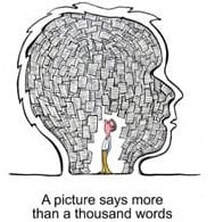 If a picture is worth a thousand words, a video has to worth ten thousand. That’s why Twitter sets its character limit at 280. They know that some people don’t want to read messages that are longer than that – but those same people will watch a video. We know that because YouTube is so popular. Differentiating a product is the art of making it more appealing when compared to its competitors. Car makers do that by adding different features to their cars, changing the exterior shape or providing different colour schemes and interior finishes. Ice cream manufacturers do it by selling different flavours. Some businesses differentiate on the basis of quality (“luxury” chocolates, for example) while other differentiate on the basis of price; making their product cheaper than the competition. And the author must do it by making sure that their book is more appealing to the reader than the hundreds of similar books that are available. But authors have to do it before the reader has even sampled the product. “sell the sizzle, not the sausage”  There is a saying in the world of sales: “sell the sizzle, not the sausage”. What that means is that you have to create a vision of the product, rather than the details of what it is. Imagine a sausage (a vegan one if you wish) sizzling away in a pan, the aromas wafting through the air to reach your nose. Imagine it being placed on a plate alongside potatoes and vegetables. Imagine a piece being sliced off and being raised to someone’s lips as they start to eat. Compare that to the actual description of a sausage I found on the internet: “an item of food in the form of a cylindrical length of minced pork or other meat encased in a skin, typically sold raw to be grilled or fried before eating.” Which of those two paragraphs is going to make your mouth water and make you think about going out to buy some sausages? That is how you have to differentiate your books. Saying that your book is a love story about two strangers who meet on a train before being separated by a train crash may be factual, but it isn’t exciting. It is the equivalent of the dictionary description of a sausage. But saying “Alex and Sam were doomed to be parted. Fate had its own plans for them and it would take all their hopes and dreams to bring them together once again. That’s the sausage sizzling description. "everyone can now be a movie director" 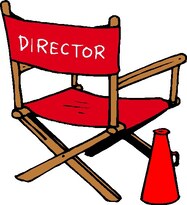 Now, imagine that you are watching TV or perhaps YouTube and you were actually presented with the image of Alex and Sam being parted and searching for each other across whatever divides them. Wouldn’t you want to know if they find each other once again? And that is what modern technology allows us to create. Because everyone can now be a movie director. All they need is a phone, some software and a bit of imagination. You don’t even have to have the phone. You can create videos from montages of photographs or other images (providing you have the right to use them). A little bit of training is always helpful and this free course offered by Future Learn is all about creating the right content for the right audiences, Throughout this series of blogs, we have focused on social media as the way to market books, because it is free (unless you use their paid advertising services). But just because it is free it doesn’t mean that you can’t get creative with it. Microsoft Moviemaker 10 (other free film making packages are available) allows you to do a wide range of things just using slides created from Powerpoint or similar packages, but if you can create video clips with your phone's camera then you can do even more. It isn’t hard to learn to use so go, play, have fun and be creative.  If you think that making a movie is too complicated, try a podcast instead. These allow you to read extracts from your books to stimulate interest. Platforms such as Spotify for Podcasters allow you to upload your podcasts and you can promote them through your social media channels. The one difficult thing about podcasts is making sure that the listener knows which character is speaking, or whose point of view is being observed. Professional narrators often use different voice ptich or different accents, but you will have to find your own way of doing it.  But whatever media you are using for promoting your work, make sure the language is:
If you are writing for a young audience then you can use the sort of relaxed forms of language that young people use, but if your target audience is older, then more formal language may be appropriate. By tone we mean that the words you use match the type of book you have written. If your book is supposed to be humorous, you can adopt a bantering type of tone. If it is serious you have to use a more serious tone. If it is dramatic, then dramatic language is appropriate.  Record yourself saying the words and play them back to yourself. Do they sound right, in the context of the book you have written? If they don’t, your audience may be put off. They certainly won’t be engaged by what you have produced, regardless of the media you are using. Above all you have to create the “sizzle” for your book to encourage the reader to click a link and go to the place where they can buy the book. If they don’t do that then your message has failed. OK, you won’t get a click from very viewer/listener/reader, but if you get enough clicks you will get sales. There are two areas we have yet to cover in detail. First of all, if a reader wants to buy a new book but hasn’t seen any of your social media content (despite your best marketing efforts that’s still a possibility), how do you help them to find it? This is called Search Engine Optimisation (SEO). We’ll be discussing that next week.  We have covered measurement in passing, within other blogs, but it is an important subject in its own right, because if you don’t measure the right things at the right time, you’ll never know if your marketing strategy is working. And if you don’t know if it’s working, you can’t improve it. So, we’ll also be covering that in next week’s blog. * Jack Trout, marketing guru. If you have enjoyed this blog and want to make sure you don’t miss future editions, you can sign up for our newsletter. Just click the button below. Don’t be afraid, we promise not to “spam” you and if you don’t like it, you can unsubscribe later. Week 12 - “Stopping advertising to save money is like stopping your watch to save time.” * 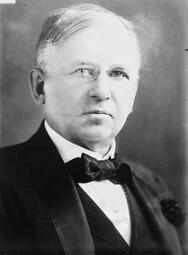 Marketing pioneer John Wannamaker Marketing pioneer John Wannamaker There will come a time when you, as an Indie author, are tempted to spend some of your hard-earned money on advertising your book, but is this a wise thing to do? That is the subject of this week’s blog. The marketing pioneer John Wannamaker (1838-1922) is famous for saying “Half the money I spend on advertising is wasted; the trouble is I don't know which half.” That quote resonates especially with small businesses and people like Indie authors, because they can’t afford to waste any money, let alone half of what they spend on anything. But we have to remember that times were different back in Wannamaker’s day. 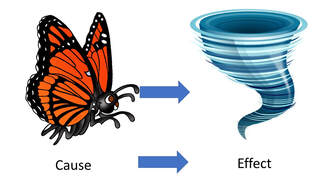 True, it is sometimes difficult to establish cause and effect. If you launch an advertising campaign and you then sell a book, is it because of a response to the advert, or because the purchaser had the book recommended to them by a friend? But that is just a single purchase. If sales increase over the entire period of an advertising campaign, it is far easier to establish cause and effect. "it is sometimes difficult to establish cause and effect" We also have to consider the metrics (measurements) available in Wannamaker’s day. They were fairly primitive; basically just money spent, newspaper and magazine circulation figures, and sales achieved. Today, however, on-line advertisers can provide users with a wide range of information regarding the performance of their adverts. 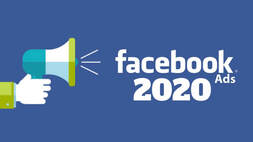 For example, Facebook Ads offer these measurements: - Reach – how many people saw the advert while they were using Facebook. - Total post engagement – The number of actions taken when the ad was viewed (likes, shares, link clicks). - Clicks – How many people clicked on a link in the ad. - Likes – how many likes the post earned. Technically speaking, Facebook doesn’t call this an “advertisement”, it is just “boosting your post”, but it is the same thing. Click on Facebook’s “Ad Centre” and you get exactly the same range of posting options, but they charge you a lot more – a £100 minimum budget compared to a £10 minimum for boosting your post. "If your ad is being seen by a lot of people, but you aren’t getting many engagements, something is wrong" If you can see how much “reach” you get, you can compare that to the number of engagements you got (clicks, likes and shares). If your ad is being seen by a lot of people, but you aren’t getting many engagements, something is wrong with the ad or its targeting. If you know how many clicks you got, you can then compare that with sales made and make a calculation of conversions from clicks to sales – and therefore work out how much each click cost you and earned you, eg, if your ad cost £10 and you got 1,000 clicks, each click cost you a penny. If you then made 10 sales, each sale cost you £1, with a conversion rate of 1 sale per 100 clicks. If you made £3 from each sale, it means you made £20 profit on the campaign.  Trying to disentangle multiple campaigns. Trying to disentangle multiple campaigns. The problem comes when you mount multiple campaigns running concurrently, using different advertising platforms. Although you can see which advertiser is getting you the most clicks for your money, there is no way to work out which clicks are generating the sales. You may be getting 1,000 clicks a day from an ad on Facebook, but you may be getting 10,000 clicks from an ad on Google. But if you got a total 10 sales from the two campaigns, you won’t know which ad on which platform generated the most sales. You are forced into assuming that Google is delivering the better results because they generated more clicks - but assumptions can be wrong. For this reason, we at Selfishgenie Publishing only advertise each of our books on one platform at a time, so we can be sure which adverts are generating our sales. That is also our recommendation for you.  We then compare advertising platforms to decide where to spend our money next time. We don’t necessarily ignore a platform, but we may reduce our spending on one and increase it on another. We are also able to compare budget size to results. For example, doubling the budget for an ad campaign might double sales, but it might also treble them or quadruple them – or have no effect at all. "Advertising a bad book will never lead to a profit" Throwing money into advertising can work. On all the social media platforms we discuss, the more you spend, the more people who will see your advert which means more potential buyers. But be very sure about the quality of your product. Advertising a bad book will never lead to a profit. Money saving tip - if you have published a series, advertising the series is cheaper than advertising each individual title. But you have to make sure that the series is properly set up on Amazon so that you can link to it. Consult the KDP website on how to do that. 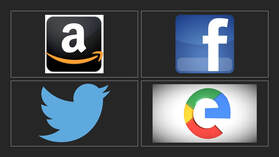 When it comes to social media advertising, we have used four platforms: Facebook, Amazon, Google and Twitter (we treat Google and Amazon as social media for these purposes, even though they aren’t). Some of them are better than others for producing results and why that should be comes from the discussion we had in earlier blogs about audience targeting. Google has by far the largest “reach” of all the platforms. An incredible 10 billion Google searches are made each month. It is used by more people per hour and in more countries than any other platform on the internet. But that doesn’t mean that it’s the best place for us to advertise. Facebook allows far better targeting of audiences, which means that, although fewer people will see our advertisement, more of them will be the people that our books are aimed at. But we have to also consider age profiles in terms of their use of social media. Older people prefer Facebook to Twitter, whereas it’s the reverse for younger readers. So, although Twitter may not be as good an advertising platform as Facebook in general terms, it may be better for us than Facebook if a book is aimed at younger audiences.  As you can see, choosing the place to spend your money is neither an easy nor a quick decision. In terms of rankings for advertising, this blog rated the following platforms in terms of their number of users, genders and age demographics: 1. Facebook, both genders, 18-65 2. Twitter, both genders, 18 -49 3. Instagram, both genders, 18-64 4. Pinterest, women, 18-64 5. Linkedin, both genders 25-64 The principal criteria used for ranking, however, is number of users.  Numbers of users doesn’t tell the whole story, however. The ability to refine target groups is one of the most important considerations in advertising. It’s called market “segmentation”, being able to break a potential audience down the way an orange can be divided into segments, so that you only direct your advertising to the segment(s) that are most likely to be receptive. The ability to reach over 2 billion users with Facebook isn’t much good if most of them don’t read books. Because it is the book readers that you want to reach. So, I have done a bit more work to show you what each platform is able to provide. Targeting Facebook Google Amazon Twitter Region/country Yes Yes Yes - Note 1 Yes Gender Yes No No Yes Interests (eg science) Yes No No Yes Use of Keywords Yes Yes Yes - Note 2 Yes Write your own ad or post Yes Yes No - Note 3 Yes Other Note 4 Notes:
 Twitter posts get their highest visibility for only 24 minutes after posting, whereas Facebook posts remain most visible for 3 hours after posting and this visibility remains true for advertising, 75% of all the people who will see a Twitter ad will see it in the first 3 hours, whereas 75% of all those who will see a Facebook ad will see it during the first 5 hours. This greater longevity for Facebook means that you cover longer time periods each day. If you post at midday and one of your targeted readers doesn’t log into Facebook until 4 pm, it is quite likely that they will still see your ad. But on Twitter it is less likely. You may think I’m pointing you towards Facebook, but I’m not. There are reasons for choosing Facebook over Twitter and reasons for choosing Twitter over Facebook. If your target audience is older, Facebook is the place to spend your money. If they are younger, then its Twitter. You will notice that I haven’t mentioned Instagram, Pinterest or Linkedin much. That’s because they aren’t platforms with which we have much experience. Certainly, in terms of audience rankings, they fall behind Facebook and Twitter, but we also know that, in Instagram’s case at least, they are more used by younger audiences. So, where does that leave us?  Basically, with a lot of decision making. First of all, it is no use advertising unless you analyse the data that is collected during your campaign. If you aren’t getting much engagement from your ad, these may be the reasons:
If you are getting engagement but few sales, then these may be the reasons:
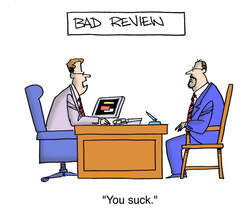 The only one of those things that you can’t fix is the last one. Actually, there is something you can do about that last one. You can “unpublish” the book. It isn’t selling and it isn’t helping you, but it may be affecting the sales of other titles, or it may affect the sales of future books. There is nothing you can do about the reviews themselves. If you have 100 good reviews (4 and 5 star) and only a couple of bad ones, then the bad ones don’t really matter. But if you have 100 bad reviews but only a couple of good ones, then you have a problem. If you unpublish the book, it is as though it never existed (except for those few people who did read it). You can start afresh with the next book. But don’t try to republish under a different title or pen name to fool the readers. If a previous reader buys it and spots what you’ve done, they will complain to the retailer and that could get you barred from their site. 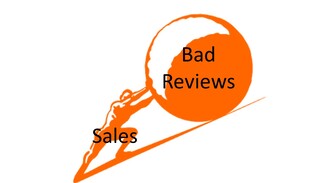 Advertising does work; if it didn’t businesses wouldn’t spend so much money on it. But we also know, from the adverts we see on TV, that there are good adverts and bad adverts and a bad advert is a waste of money. Sometimes, however, it isn’t always easy to see the direct success of an advertising campaign. I’ll give you an example. We recently ran an advert for Operation Absolom, the first book in Robert Cubitt’s “Carter’s Commandos” series. The campaign did alright but didn’t set the world on fire in terms of results; it covered its costs and returned a small profit. However, a couple of days later we noticed that sales started to increase for book 2 in the series, then book 3 and finally book 4. By advertising the first book, we had created some new fans who read the rest of the series and, hopefully, will now also buy book 5, which has now been released. The end result, measured over a longer time period, was a much higher profit on the campaign. This delayed reaction is something to consider if you are the author of a series of books. We’ve discussed “content” before, but it is an important subject, especially if you have to create your own content to support your social media marketing, so next week we’re returning to that topic. * Henry Ford If you have enjoyed this blog and found it informative, then be sure not to miss any future editions. Sign up to receive our newsletter by clicking the button below. |
AuthorThis blog is compiled and curated by the Selfishgenie publishing team. Archives
June 2025
|
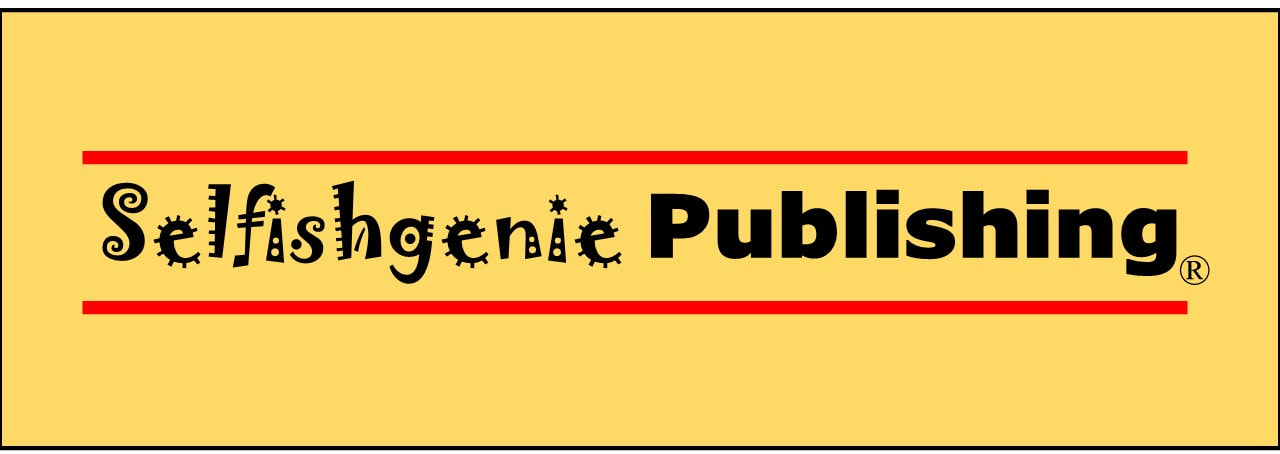


 RSS Feed
RSS Feed